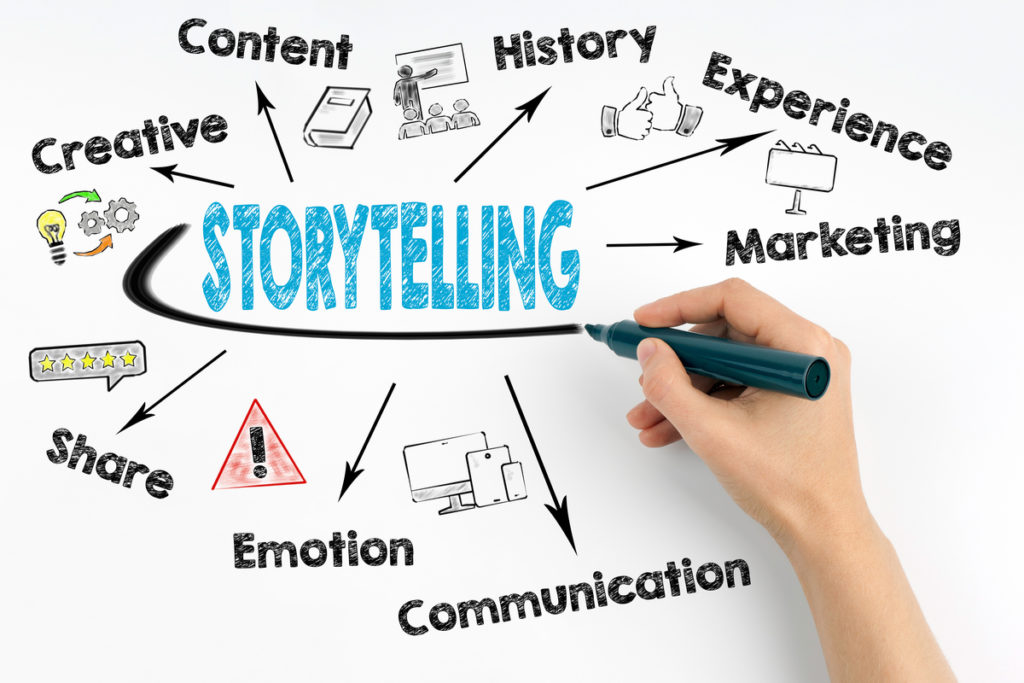The philanthropic landscape tends to take some interesting turns over the course of a calendar year, and 2023 was no exception.
Fiscal challenges still linger from once-in-a-generation inflation increases that peaked more than a year ago (we touched on that in our May 2023 blog), affecting multiple aspects of the way individual donors, corporations and foundations look at how they can lend support but still survive (and thrive). New technologies continue to be one of the hottest topics in the Nonprofit, For-profit, and personal environments. And as one year transitions into (and stockpiles onto) another, what in a single frame of time is an ever-so-slight socioeconomic/generational behavioral shift or change in philosophy grows to a significant change in culture — and how we look at ourselves, each other, and the world we live in.
As your organization marches into 2024, our hope with this month’s blog is simple: to give you some things to think about in terms of your nonprofit’s agenda for the coming year, identify defining trends that will be shaping the near future (and the implications for you), and a little guidance in terms of what can help — and what may challenge — you in the 12 months ahead.
TAKING A LOOK BACK
Hopefully your organization employs some sort of annual recap-roundtable-summarization of the year that was. Gathering your leadership, staff and board members for a deep-dive session enables you to map the peaks, the valleys, the accomplishments, the challenges and more that you encountered in 2023. The takeaways from that inventory should help. And, as we’ve stated before, do not be afraid to engage some of your key donors in this process. They’re close to the cause, they want to see it succeed; understanding their perspective — from their side of the table — can help monumentally in building the best plan you can.
ANY CHANGES TO THE LANDSCAPE?
Are the government-funded revenue sources that you received in 2023 secure for 2024? As evidenced in this article from Why Philanthropy Matters, pragmatic concerns are currently taking precedence in the UK, where they have seen “many local councils reach such a parlous financial state that they are essentially bankrupt, and (they) are likely to see more of the same in 2024. This brings challenges for charities; some of them have local government contracts that may abruptly be canceled, leaving them in huge financial difficulty.”
Are there any current donation laws that are changing/coming off the books in the areas where you solicit? Use staff or board members (or a lobbyist, if you have one) who are well-read in policy and law, and see if there are any changes from a governmental/legal perspective taking place in 2024 that may affect your support. The 2017 Tax Cuts and Jobs Act — which doubled the standard deduction for charitable gifts — is set to expire at the end of 2025.

BE AWARE OF DEVELOPING TRENDS
Some of the tides that may rise to the top in 2024:
1. (Another) Uptick in Charitable Giving: We’re nearing the end of a historical four-year cycle that saw significant increases in philanthropic donations (March 2020 to April 2021 — with a seismic shift towards support of immediate needs providers) in response to the height of the COVID-19 pandemic, followed by a struggle to sustain these record giving levels that was then compounded by record cost-of-living accelerations from April 2021 to December 2022 (when the U.S. year-over-year inflation rate shot from a 2020 norm of +1.5% to spikes as high as +9.1%). Despite continued economic uncertainty, encouraging metrics such as A) a normalized inflation rate (+3.4% in 2023, down from +6.5% in 2022), B) an unemployment rate that averaged 3.5% in 2023, and C) the Federal Reserve’s December 2023 upgrade (to +2.6%) for its Domestic Product estimate to close out 2023 have given the public fiscal confidence that’s estimating as much as a +5% increase in giving in 2023….and could lead to a further uptick in donations in 2024.
And if you’re curious as to how an election year affects charitable giving, according to Bill Jacobs of Analytical Ones, the answer is not much. However, be on the lookout for ‘rage giving’ after November’s election, depending on how the results shake out.
2. A Fresh Way of Looking at Things: Agility is a key characteristic of any successful enterprise. A visionary and entrepreneurial perspective emboldens an organization to look outside the usual manner in which things have been done, and in doing so sets itself apart from other organizations in what it does and what it achieves. Embrace new ways of doing things, new strategies and new outcomes as you look to reinvigorate your fundraising efforts in 2024. Leverage the younger members of your staff, board of directors, volunteers and donors for their ideas — as they may already be organically more learned in these new perspectives.
3. Analyze Your Donation Portfolio: Take a close look at where your donations are coming from — Individuals, Corporations, Foundations, Grants, Recurring Giving, Peer-to-Peer and Crowdfunding, Memberships & Sustaining Giving, Planned & Legacy Giving, Sponsorships, Events — and compare your metrics to similar nonprofits. Where do you overachieve? Where do you underachieve? For most charities (regardless of size), Individual gifts make up the lion’s share of revenues. What can you do to take that giving a step further? Maybe think about offering a Recurring Giving program (think a ‘Subscription’ dynamic…which we can see is an accepted method for so many in their everyday lives, from phones to streaming services to roadside assistance to food delivery) to expand the frequency with which your donors support your cause. Perhaps put more effort behind stewarding your donors by personalizing your relations more in an effort to make your ‘points of contact’ more meaningful to both sides. We have some good thought-starters if you’re looking to incorporate new vehicles of giving.
4. Donor Advised Funds (DAFs): This sector has really started to come into its own as a viable method of giving. A DAF is essentially a charitable giving approach created to manage donations on behalf of organizations, families, or individuals. In a DAF, a donating individual/organization opens an account within the fund, and deposits cash, investments/securities or other items of value. The funds set aside in the account accrue (think along the lines of a ‘401K for nonprofits’), and the owner of the account can direct distribution to organizations. In the last decade, DAFs (spurred by their flexibility and tax benefits) have been among the fastest-growing charitable giving vehicles in the U.S.; in fact, the National Philanthropic Trust’s 2023 DAF Report stated that its survey of nearly 1,200 nonprofits that sponsored DAFs saw an increase of +9% in DAF-related grants in 2022 to a new grant dollar high of $52.2B. This coming year is a good time to integrate DAFs as an option for your audience.
5. Be a Friend — Not a Foe — to Technology: At a time when the world of technology opens up a new door seemingly every month, identify new practical applications that might help you achieve your goals. Artificial Intelligence (AI) is a prime tool to streamline and improve donor segmentation by minimizing guesswork. This can make your personalization efforts easier and lead to enhanced productivity, efficiency, decision-making, communications and fundraising results — thereby giving you time to focus on additional ways to build revenue. AI also is a solution for identifying new prospective major donors based on previous charitable giving and other socioeconomic behaviors. Look at a new technology, do your research on how it’s currently helping organizations in the Nonprofit space, and see if it’s feasible for your charity.
IS YOUR ’80/20′ RULE BECOMING A ’90/10?’
According to a 2022 report from the Congressional Budget Office (CBO), the richest 1% owns more than a third of all U.S. wealth, while the top 10% holds 72% of the country’s total wealth. (Both metrics are increasing more each year.) The customary ’80/20 Rule’ (where 80% of a nonprofit’s donations come from only 20% of its donor base) is in many organizations slowly being replaced by a ’90/10′ dynamic. The effect of this change in disparity on your nonprofit is two-fold: it underscores more than ever the importance of properly (and frequently) stewarding and nurturing the donors in that 10% group, as they are clearly your lifeline. Secondly, such a reality makes it an immediate priority of uncovering alternative routes of support in an effort minimize that 90% metric as much as possible. It’s a well-worn rule of any business to not put too many of your eggs in one basket.
DIVERSITY & INCLUSIVITY
The movement towards a diverse nonprofit leadership and board of directors has never been a higher priority. Faithful supporters of true diversity across the entire socioeconomic spectrum — not just racial- and gender-based, but also in terms of age, profession, income level, religion, etc. — means a charity whose leadership mirrors the populations it helps is indeed ‘walking the walk.’ Likewise, diversity and inclusivity should also be a goal for a nonprofit’s donor base; think of the revenue potential for demographics that have been looked over for support.
PLANNED/LEGACY GIVING AS A CONTRIBUTOR TO YOUR SUPPORT
Has your organization made a concerted effort to shore up campaigns that target the wealth of today’s Baby Boomers? There may be enormous potential here — and by its nature of typically being funded with investment dollars, equity and property over a long period of time, it’s something that shouldn’t even affect the current cashflow of its donor. A gift to be bestowed at a future date (or upon death) ensures heightened enduring donor engagement as well as helping the long-term financial stability of your organization. And like the aforementioned DAFs, there also can be a myriad of tax benefits to Planned/Legacy Giving. Planned programs have become especially popular among higher education institutions hospitals, museums and community foundations.
IS SOCIAL MEDIA A PRIORITY?
Social media is a monumental asset for a charitable organization’s fundraising strategy. It allows your story to be easily transmitted with a simple mouse click — with its destination theoretically seeing no bounds. Not only is the reach exponential, but the ability to use video and still imagery to drive your story home is something that can’t be overlooked. These benefits of Social Media in a virtual world make its role essential to any fundraising campaign.

USING STORYTELLING TO BUILD YOUR ROI
An influential way to strengthen connections with your current donor base AND attract new supporters is the art of storytelling. Beyond the nuts and bolts of numbers, the stories you collect every day from the populations you help have the distinctive ability to humanize the impact of a charitable contribution by resonating with your audience on an emotional level. A compelling story — starting with the situational challenges your subject is faced with, and the real transformations he/she was able to achieve with donors’ support — communicates the concrete impact of a supporter’s generosity to bring about true, positive change. And the video and still imagery we noted in the previous paragraph? There’s a reason for the phrase ‘A picture says a thousand words’ — and both are perfectly built for a story.
We hope this read helped you identify some things you can focus on to improve your organization in the coming year. Drop us a quick note if you’d like to discuss your nonprofit’s plans for 2024!

